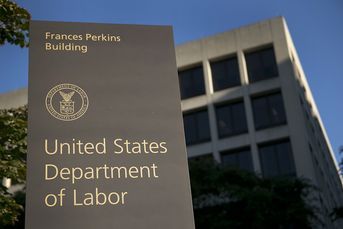Gen X on shaky ground for retirement, with 40% having saved nothing

The median retirement account balance among Gen Xers is just $10,000, NIRS found.
The 401(k) system will face its first test in a just a few years, when the oldest members of Gen X hit retirement age — and so far, things are not looking good.
Gen Xers, who were the first generation strongly affected by the shift from traditional pensions to defined-contribution plans, have far too little saved on average in 401(k)s and individual retirement accounts, according to a report Wednesday from the National Institute on Retirement Security. In many cases, those workers were thrown into the new system well before advances such as automatic enrollment, diversified default investment options and annual contribution escalations made 401(k)s more user-friendly.
As a result, Gen Xers are on track to have less saved for retirement than millennials and Gen Zers.
The “typical” Gen X household currently has about $40,000 in retirement savings, NIRS found — but that figure, while low, is far from telling the complete story.
The average retirement account balance among Xers is just under $130,000, but the median amount is only $10,000, according to the report. That’s largely the result of about 40% of Xers having no assets in retirement accounts.
“These numbers should be alarming to anyone concerned about retirement security, because they indicate that many Gen Xers will not be able to maintain their current standards of living in retirement,” the authors of the report noted. “This not only has personal costs but may have societal costs as well.”
Working longer or having phased retirements, potentially with part-time second careers, is a likely result — and one that many workers now expect.
That will also more likely affect middle- and low-income workers, who have smaller account balances. Some retirement industry observers have noted that low-income families can replace a higher percentage of their pre-retirement income with Social Security payments, and that they have lower expenses in retirement as a result of their lower standards of living. However, they are also extremely vulnerable to major financial shocks, which can range from unexpectedly having to replace a car to covering high medical expenses.
While the average retirement account balance for Xers in the highest income quartile is $251,000, it drops to $87,000 in the third quartile, $31,000 in the second and $34,000 in the first, according to NIRS. For those groups, the median balances — which are more telling — come in at $72,000, $19,000, $0 and $0, respectively.
However, the new paper notes that over time, balances in DC accounts have gone up for members of all generations currently in the workforce.
Expanding retirement plan access has helped that, and the advent of state-sponsored automatic IRA programs appears to be helping. According to a separate recent report from the National Bureau of Economic Research, auto-IRAs have had the effect of increasing the likelihood that workers have access to an employer-sponsored plan by about 3% and the likelihood that workers participate in those plans by 7%. The number of workers covered by employer retirement plans has increased by a range of 3% to 5% in states with auto-IRA programs.
Those states generally require businesses with a certain number of employees to either provide their own, private retirement plans or enroll workers in the state-sponsored IRA. That requirement has served as a prospecting opportunity for pooled employer plan providers, as well as 401(k) providers broadly, as some employers prefer having their own plans, as well as the higher contribution limits in 401(k)s compared with IRAs.
WHAT ADVISORS SAY
Gen Xers are at ages where many are faced with supporting parents as well as young or adult children, and on top of that, they have student loan debt, mortgages and other financial hurdles, Tim Melia, principal at Embolden Financial Planning, said in an email. Those factors show an opportunity to review how they are prioritizing where their cash goes, Melia said.
“Sometimes, they are not taking full advantage of employer contribution matches. They may not be fully contributing to IRAs, which have contribution limits that expire every year,” he said. “Are they setting aside money for a child’s college at the expense of their own retirement? Are they aggressively trying to pay down debts at the expense of retirement savings?”
Noah Damsky, principal at Marina Wealth Advisors, said he sees Xers struggling financially more than others.
“I estimate they’re about 30% behind the previous generation as a result of higher living costs such as soaring rent, food and energy prices,” Damsky said in an email. “They’re likely to fall further behind as expected stock market returns and interest rates are lower than they were for previous generations.”
High housing costs, particularly for those living on the coasts, are also a factor, and “many are not able to make more significant contributions to retirement accounts,” Chris Woods, founder of Silvis Financial, said in an email.
Francisco Ayala, financial life planner of The Coleridge Group, sees the issue as more of an educational matter than a generational one.
“I have worked with Gen Xers that have over a million dollars in savings and others that have virtually nothing. But I also worked with baby boomers in the same predicament,” Ayala said in an email.
“Everyone needs to know the importance of compound interest and that it cuts both ways,” he said. “For savers it makes reaching a goal a lot easier, but for debtors it makes digging out of the hole that much more difficult.”
Traits and technologies advisors need to know before going solo
Learn more about reprints and licensing for this article.








